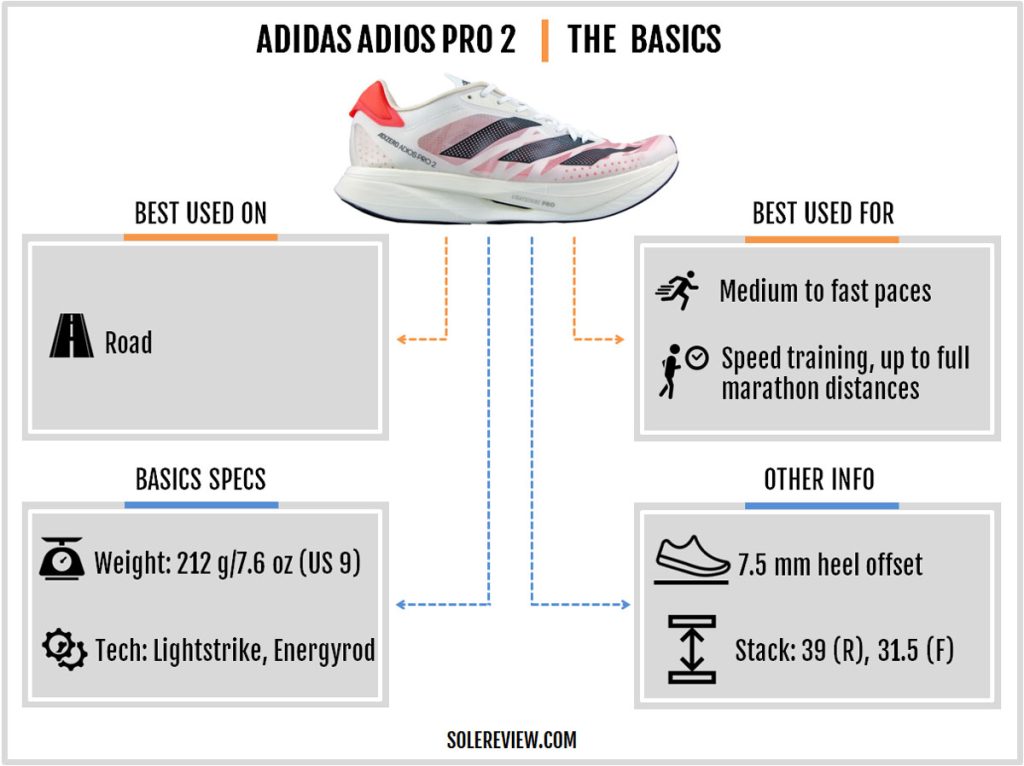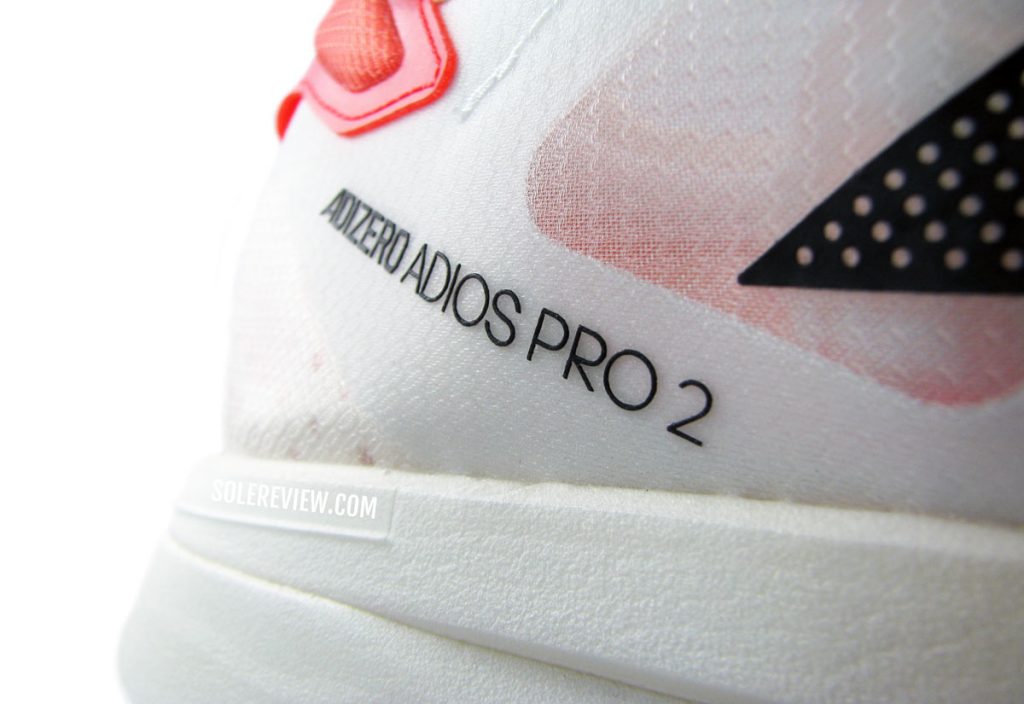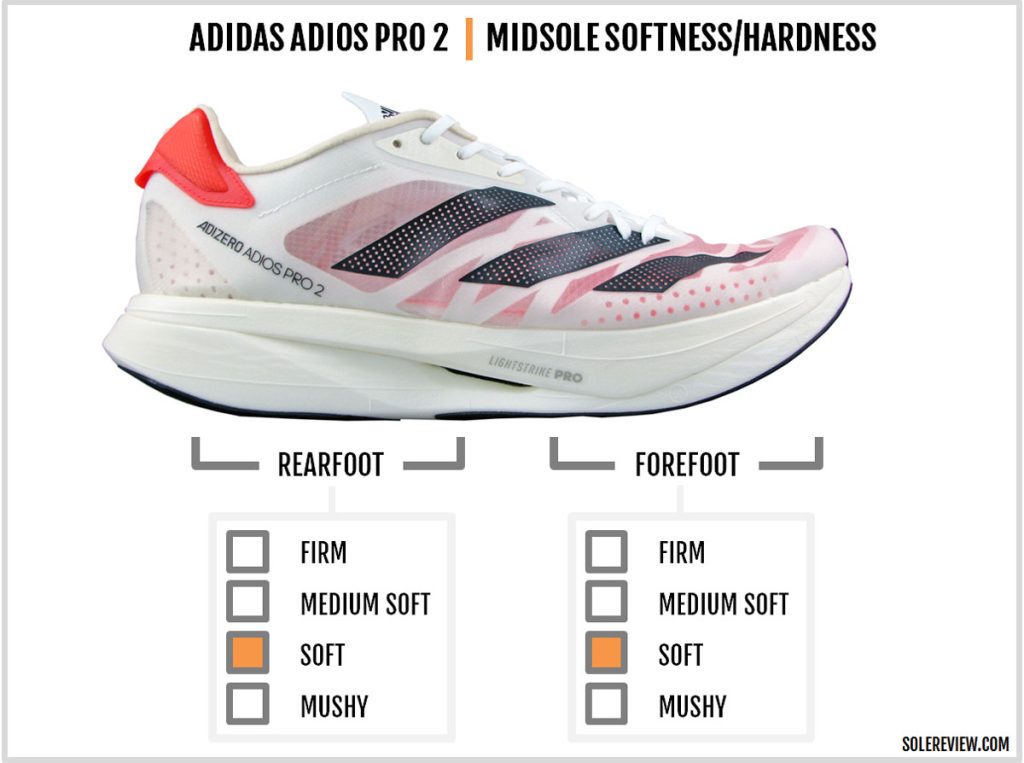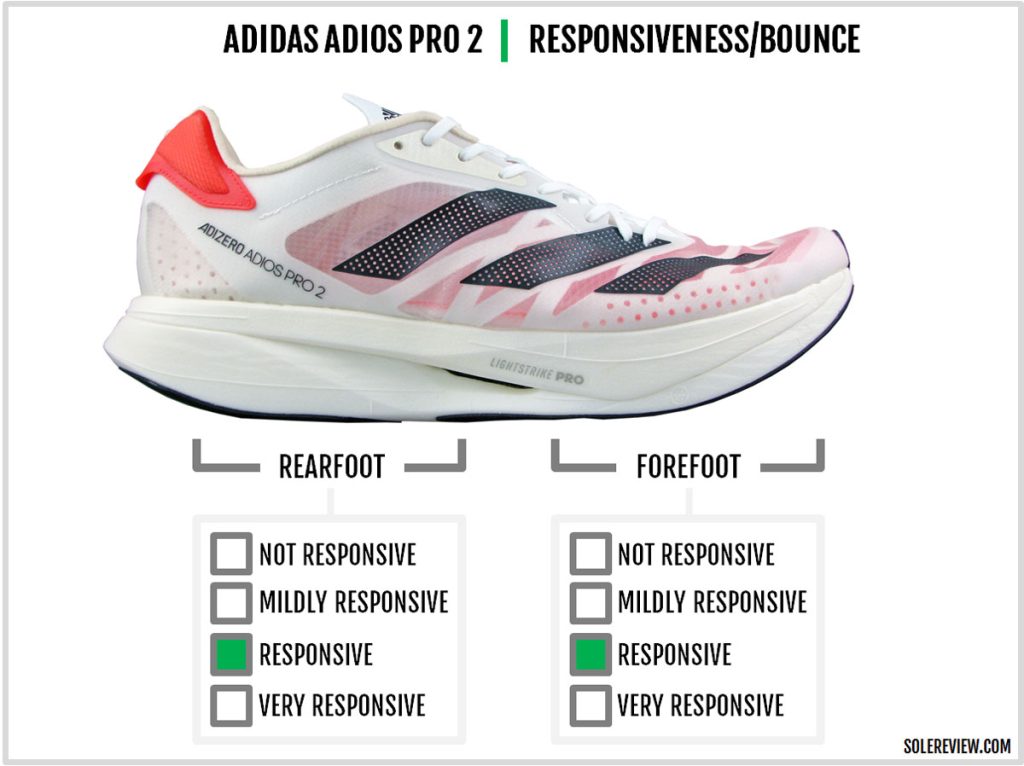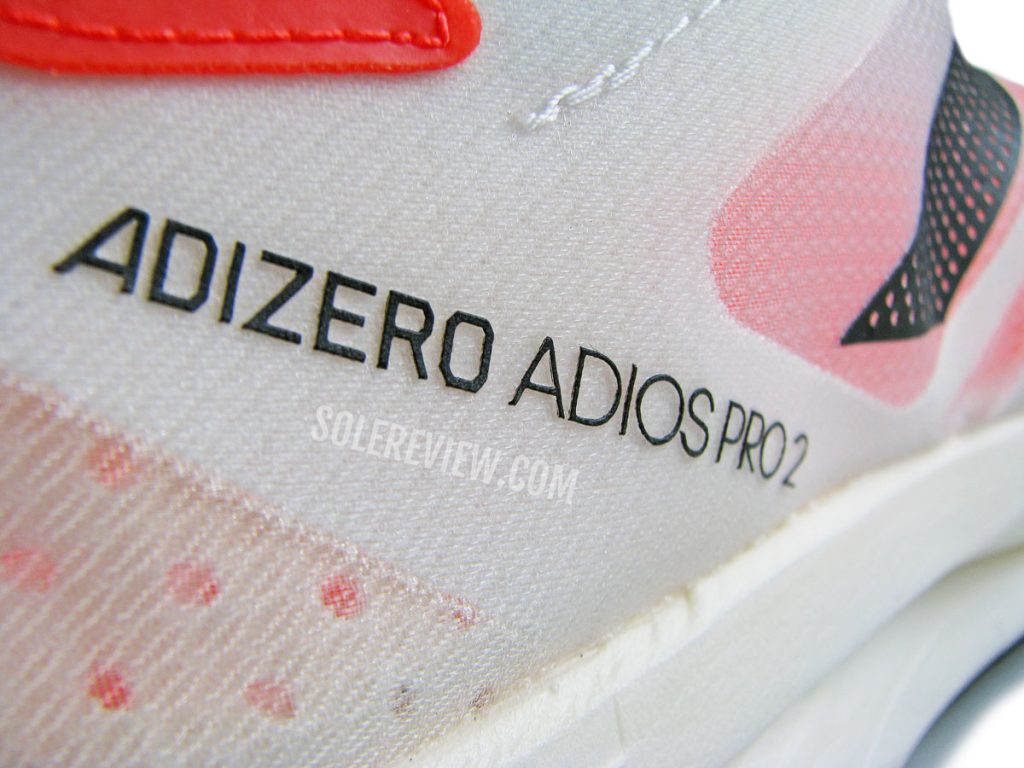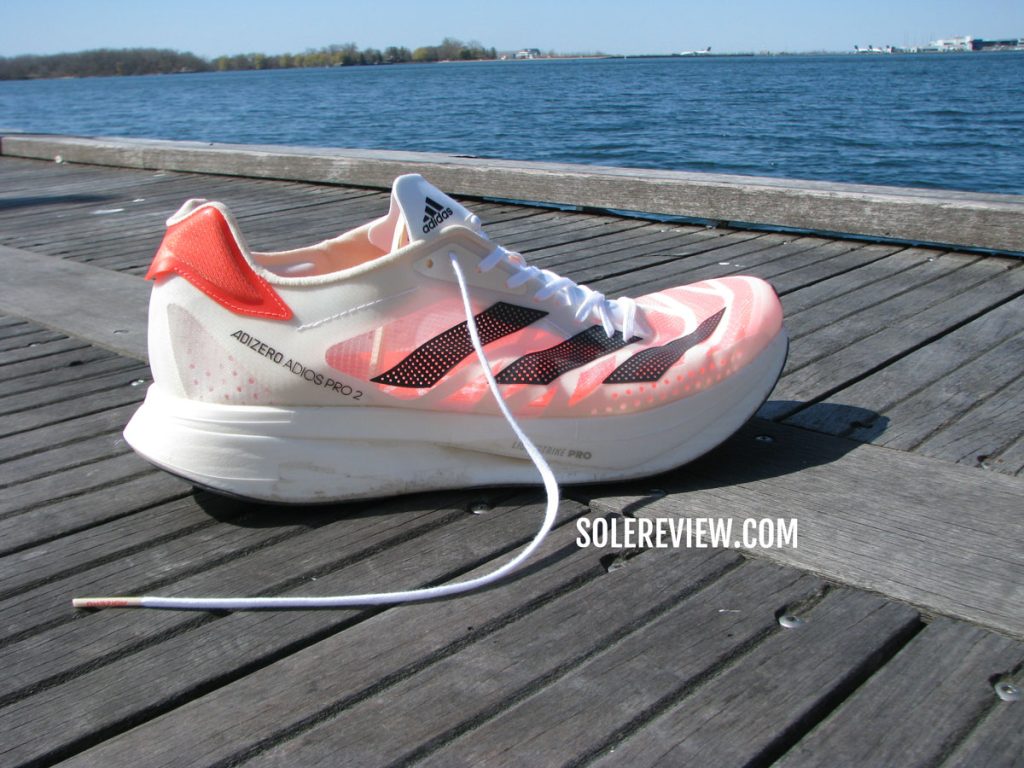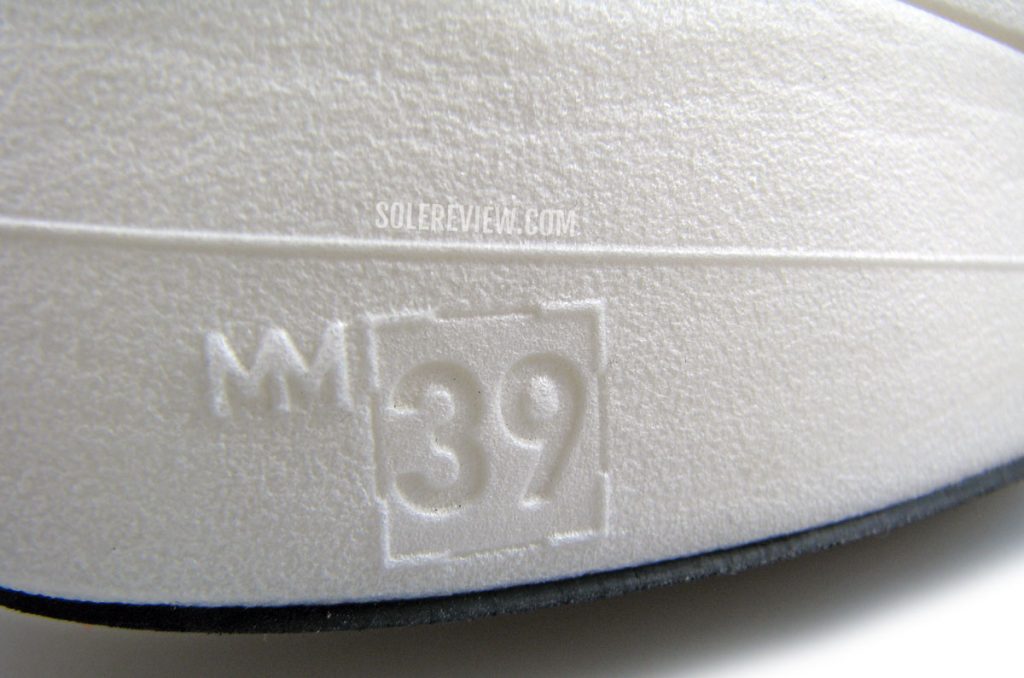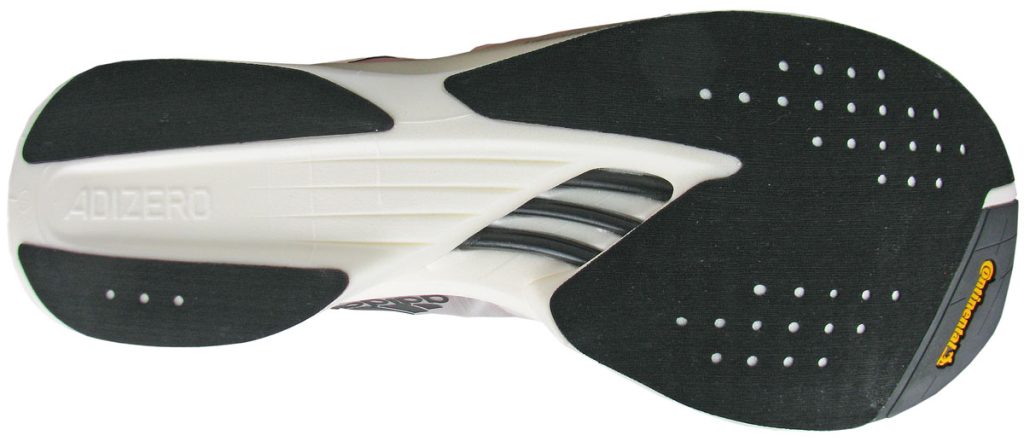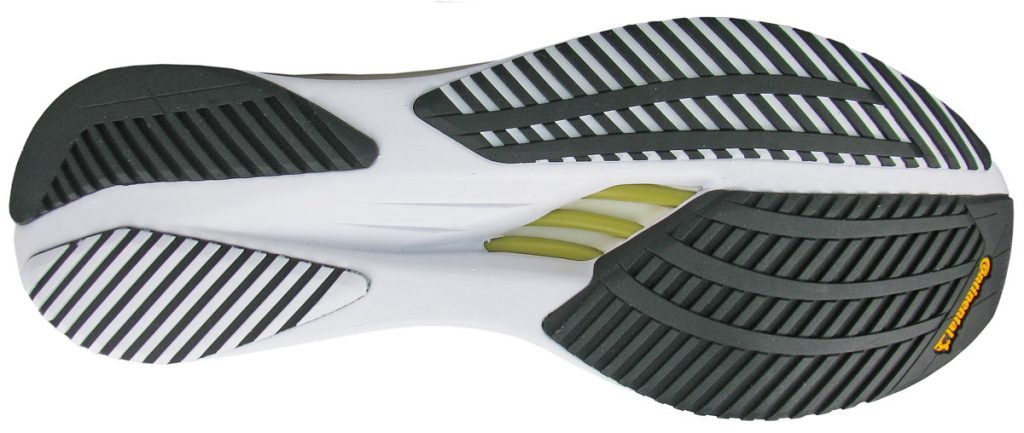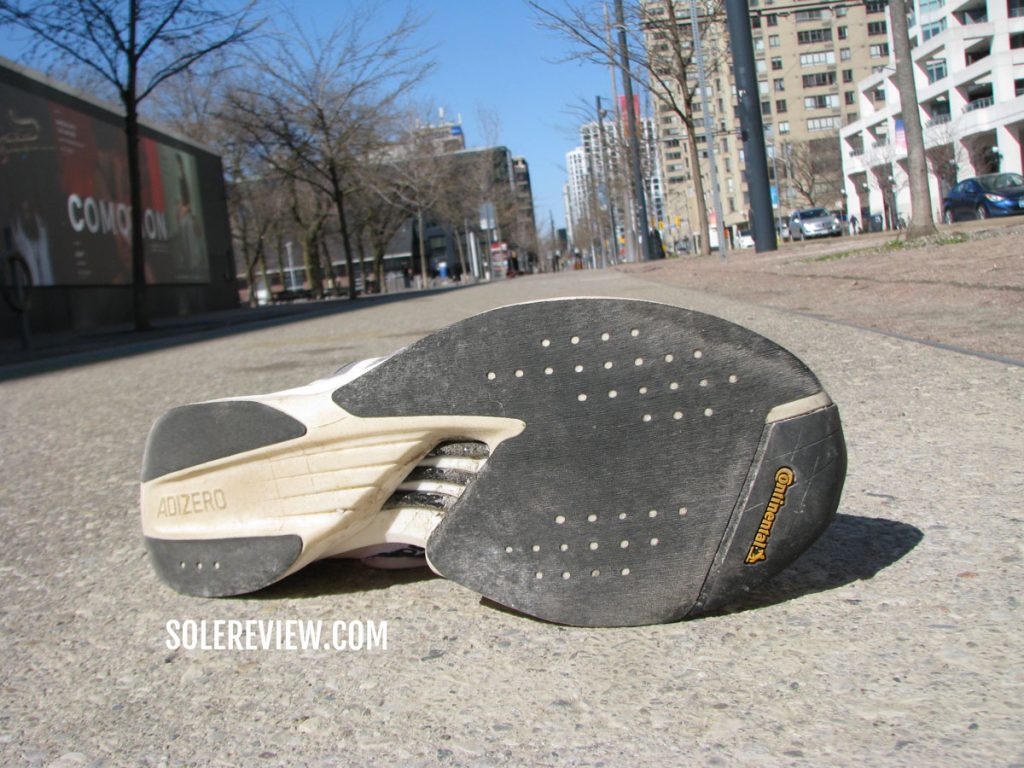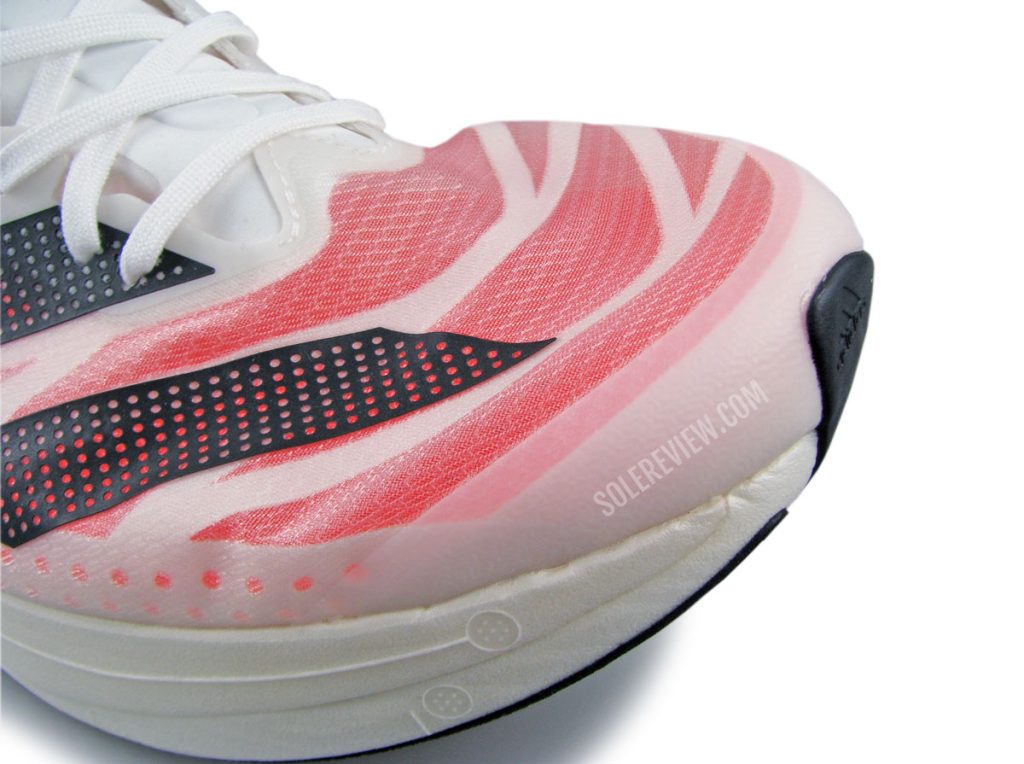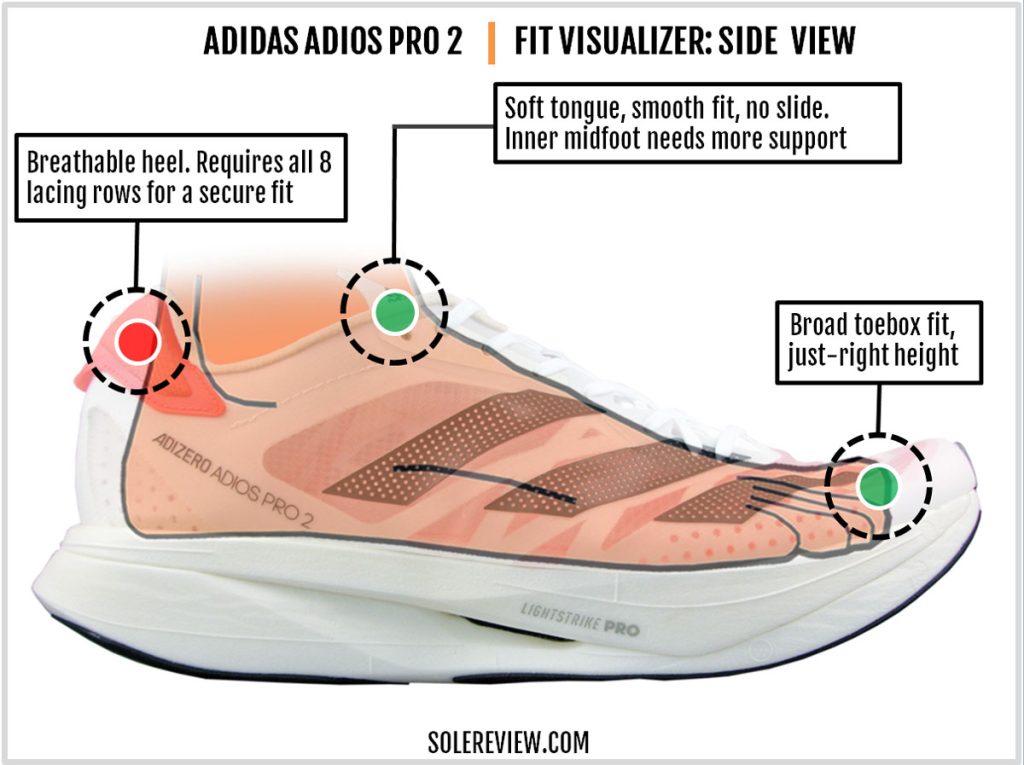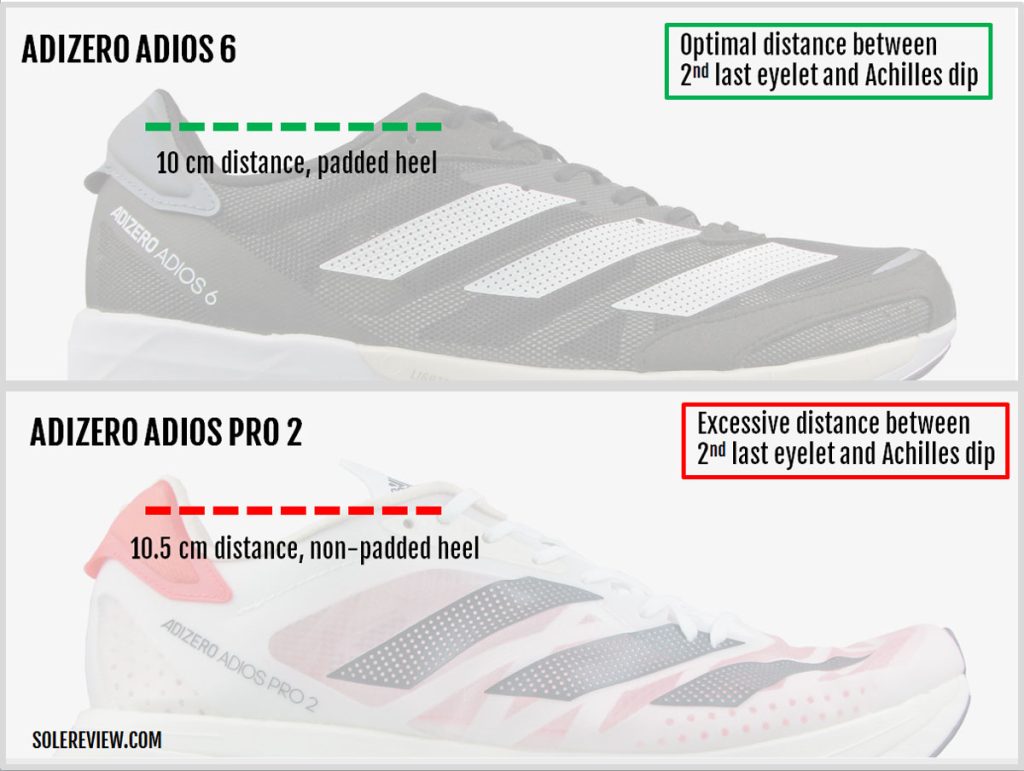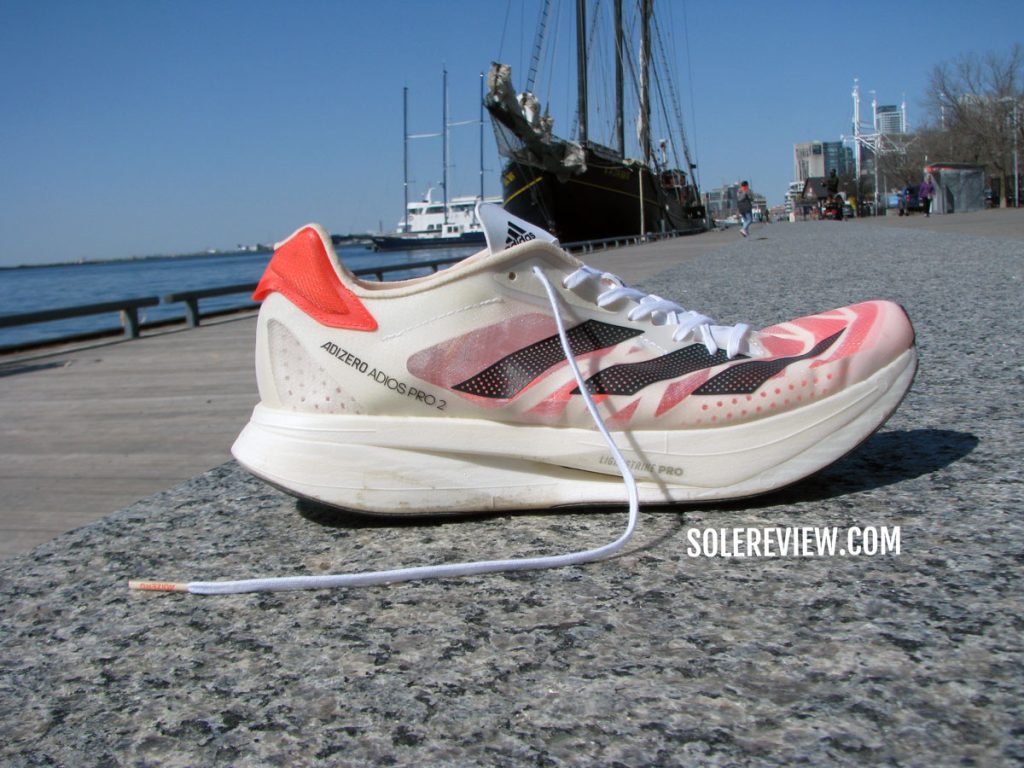The adidas adios pro 2 was purchased at full retail price for our review. The amount is in Canadian Dollars.
INTRODUCTION
Though the Nike Vaporfly is now perceived as the first running shoe with a Carbon fiber plate, it’s easy to forget that many came before it.
The Brooks Fusion (a mid-90’s running shoe) contained an S-curved Carbon fiber plate; the Etonic Quaser and Alpha 1 used stiff fiberglass plates as a transition device. The 1995 Reebok Instapump Fury’s midfoot had a Carbon fiber stabilizer.
What mattered was Nike’s execution and timing. The Carbon-plated midsole would have been another dud if not for the PEBA foam ZoomX, so clearly it was an idea whose time had come.
Many plated racers followed the Vaporfly. Some, like the Saucony Endorphin Pro, are similar. Others, like the Brooks Hyperion Elite and plated racers from Hoka and Asics are different spins on a similar idea.
By all accounts, the ultra-cushioned racing shoe segment has reached the point of diminishing returns. Any new model with a cutting edge midsole foam and carbon fiber internals will struggle to add value.

The adios Pro 2 is adidas’s high-end racing shoe that uses 100% Lightstrike Pro foam for its midsole.
Last year, the adidas adizero adios Pro 2 arrived to a crowded marketplace of plated racers.
The first version of the adios Pro had a blink-it-and-miss-it run. It did not seek mainstream attention because of low inventory, so none was given. In contrast, the adios Pro 2 got the marketing dollars that a $220 shoe deserved, and this time, there is enough stock to go around.
While it shares a similar form factor (Lightstrike Pro + Energy Rods) as the Adios Pro V1, it’s also a brand-new running shoe from top to bottom. This time, the ‘Energy Rods’ are visible under the midfoot – which wasn’t so with the V1.
For now, we’ll leave you with this thought – the adios Pro 2 is a speed-friendly cushioned racer that delivers on its promise – mostly.
The Adios Pro 2 isn’t without flaws, so it’s worth considering equally-priced or less expensive alternatives.
The Lightstrike Pro midsole lacks the characteristic snap of the Nike Vaporfly or Saucony Endorphin. Nonetheless, adidas’s signature foam is responsive and works together with the Energy Rods to deliver a quick ride character.
Despite our initial reservations with the lug-free design, the unusual geometry of the Continental rubber outsole grips extremely well.
Like most soft racers of its kind, the heel stability is terrible. This limits the Adios Pro 2’s use case versatility to fast paces, and preferably forefoot striking.
And as you’ll see later in our review, we also have a few uncharitable thoughts about the quality of heel fit and midsole design.
THE RIDE EXPERIENCE
To understand how the adios Pro 2’s midsole works, getting acquainted with its internal setup helps. We hope to cut open the midsole soon, but in the meanwhile, we’ll try to paint a picture with words.
Like the Boston 10, the midsole contains two separate stiff components. The first are the ‘Energy Rods’ – a set of tubes that are sandwiched between the top and bottom layers of the Lightstrike Pro foam.
These tubes (made of Carbon composite, we presume) begin at the base of the midfoot and slope downwards towards the forefoot. Under the heel is a stiff plate that’s not connected to tubes, but placed atop them.
A similar board also exists on the Boston, except that it’s visible under the insole. Here, there’s a layer of foam on top.
Unlike most plate-infused racers, the adios Pro’s stiff board and Energy Rods are separate components. That means that this cushioned racer behaves very differently than say, a Nike Vaporfly, Saucony Endorphin, or even the New Balance RC Elite V2.
The Lightstrike Pro foam isn’t as soft as the Nike ZoomX or even Saucony Pwrrun PB.
At the same time, it’s softer than Brooks DNA Flash and Skechers Hyperburst. adidas doesn’t specify what exactly Lightstrike Pro is made of, but it’s not PEBA foam.
On the softness scale, the LS Pro is between the Nike ZoomX and Brooks DNA Flash foam.
As a stand-alone material, the Lightstrike Pro foam is excellent. It has a satisfying spring, as if to assure that owner of the shoe that $220 was money well spent.
This is the kind of midsole material that comes into its own during a long-distance run.
The deep reservoir of bouncy cushioning keeps the feet comfortable when the running time creeps over an hour. We also tested the shoe in below-freezing temperatures, and the midsole did not stiffen.
The die-cut insole is very thin, so it’s not a significant contributor to the cushioning softness. It’s lightly attached to the lasting, but our picture is proof that it’s easily removed.
It was hard to isolate the LS Pro’s responsiveness on the adizero adios 6 and Boston 10, both of which used a firmer Lightstrike EVA frame with LS Pro. But on the adios Pro, it’s just the high-end foam and some stiff tubes.
The midsole is more resilient than a PEBA foam stack, so if all things were equal, Lightstrike Pro is more supportive than ZoomX and Pwrrun PB.

Along with other factors, the slim midsole and exceptionally high bevel angle makes the heel unstable.
However, the ridiculously deep bevel angle makes the heel stability terrible. It’s also compounded by the slim base and the lack of any side cupping whatsoever. The heel fit of the upper is also sloppy, an area of discussion we’ll cover in our upper fit breakout.
The insole is nearly flush with the midsole edge, so the foot doesn’t sit in the midsole. But again, most of the plated shoes are designed so.
The lack of stability isn’t noticeable when going fast and forefoot striking. But this is NOT a shoe for a lazy heel-to-toe loading at slow running speeds; it’s very easy to roll your ankle. The adios Pro 2 is not your versatile running shoe, and only does well for specific use-cases.
Not all cushy midsoles with a plate behave like that; the New Balance RC Elite V2 is miles ahead of the adios Pro in versatility.
The adios Pro works best as a racing shoe at speeds that are higher than 4:30 min/km (7 min/mile). While many forefoot-striking runners will also find the Adios Pro 2 well-behaved at 5:30 min/km (8.5 min/mile), going faster is safer and more transition-efficient.
The adios Pro 2’s 7.6-ounce (212 grams) build helps its case as a high-mileage trainer, as there’s less weight to carry during long-distance runs.
We’ve often said that it’s futile to obsess over a ‘heel drop’ of a shoe, and the 7.5 mm ‘drop’ Adios Pro 2 shows us why. The offset alone has no bearing on whether a shoe will be friendly for forefoot strikers or not.
There was some truth to the co-relation between heel drop and forefoot striking 10 years ago, when most running shoes had over-engineered rear midsoles.
That’s no longer true, so unless we’re talking about a 14 mm offset shoe, people should stop fussing about what the ‘drop’ is.
The generous bevel that makes the heel unstable is also what prevents it from catching the ground during forefoot or midfoot striking. The heel is 39 mm thick, but landing in the front doesn’t feel forced at all.
For a shoe that promotes midfoot striking, adidas has made some strange design choices.
The forefoot has a high toe spring, and that’s good for quick roll-forward transitions. Understandably, the Energy Rods also make the front very stiff – again, a nice feature to have in a racer.
However, the raised forefoot means that there’s a limited contact area available for landings and transitions. That’s not a drawback by itself, but turning the shoe over leads to some furious head-scratching.
To show ‘what’s inside’ the midsole, the adios Pro V2 has a cut-out exposing the Energy Rods.
This peculiar geometry robs the outsole of precious real estate for foot-strike, something that the adios Pro V1 steered clear of. Sure, the stiff Energy rods add torsional rigidity, but what of the section below it?
While we haven’t tested the Pro V1, we assume that its midsole did a better job at connecting with the ground.
The adizero Boston 10, too, has exposed Energy Rods. But its design is a great balance between form and function. Both sides of the cut-out window are bridged with foam to maximize the contact area.
It’s a pity, because the odd-looking Continental rubber outsole has excellent traction.
It would have been nice to have more of it under the forefoot, rather than the vanity cut-out. Based on the pictures, even the newest Takumi Sen 8 suffers from the same design choices. It’s like Nike adding a Zoom Air bag to the Alphafly to end up making it inferior to the Vaporfly.
The form over function strategy works sometimes, but not always.
Don’t let the absence of a lug pattern scare you away, the outsole grip is excellent, even on the wet. Look closely, and the ‘flat’ rubber has a brushed texture for traction.
The perforations on the rubber slabs make the thin outsole even softer, as it flexes to move freely with the midsole. Only the tip of the outsole (where it says Continental) is made of a thicker rubber.
Say what you will – shorter races feel better with a low-profile flat rather than a cushy trainer.
For example, the firm ride of the adios 6 feels extremely efficient during a high-cadence run, and you don’t have to worry about stability. The Adios 6 is also better for treadmills and track – surfaces that are not best suited for the Pro V2.
A slightly less expensive alternative is the Saucony Type A9. It’s a firm and traditional racer with an upper fit and outsole grip to match.
Since both the adios models are not everyday trainers, here’s where the Solarglide 4 comes in. This shoe has a tried-and-tested architecture that combines the durable Boost midsole with a Continental rubber outsole and EVA frame.
If not the Solarglide, the Asics Nimbus Lite 3 will work just as well.
IS THE ADIDAS ADIZERO PRO 2 DURABLE?
Our adios Pro 2 is close to 100 miles in, and there’s a low amount of wear and tear. The thin upper mesh is supported by a soft felt-like structure that acts as a reinforcement.
The thin and soft Continental rubber outsole looks flimsy, but that’s what allows it to flex with the soft midsole to slow the wear-and-tear process. Unless you’re heavy and run in very warm weather, 350 – 400 miles should be easily doable.
THE UPPER DESIGN AND FIT
Technological advancements in upper materials aren’t as glamorous – or marketable – as midsole tech, so they often go unnoticed. There are once-in-a-blue-moon intros like the Flyknit or over-the-top uppers on Nike (Air Uptempo, Foamposite, Footscape) and Reebok Basketball (Reebok pump, Shaqnosis) shoes in the ’90s, but those are, again, rare events.
Nonetheless, the upper materials have also kept pace with the evolution of the carbon-infused midsoles. The first edition of the Nike Vaporfly had a Flyknit upper, but the Next% and Alphafly use thinner yet structurally robust textiles.
The adios Pro V2’s mesh shell is made of what adidas calls ‘Celermesh 2.0’.
It’s a very thin fabric that’s bonded to a network of soft underlays. These inner layers have a felt-like texture and add structural integrity to the lightweight upper. There’s a solitary flat-locked seam inside that blends in without creating a hot spot.
adidas claims that the upper uses content that’s partially recycled – by this point, adidas’s partnership with Parley Ocean plastic is common knowledge.
From the outside, the nearly see-thru mesh looks very breathable. On the road, it’s slightly less so.
For the sake of comparison, breezy shoes like the Brooks Launch 8 and Saucony Endorphin Shift do a much better job of air circulation.
The adios Pro 2 has a very broad toe-box that allows the toes to splay wide; the ceiling height is just right too.
It’s still a very snug shoe; the small toe sits flush against the lightweight mesh.
The top view of the upper presents nothing amiss at first glance. The traditional (non-stretch) racer-type laces are threaded asymmetrically through the 7 + 1 eyelet panel.
Something about the upper fit felt off during the testing period, and that intuition was reinforced by the sloppy midfoot and heel fit. At first, we assumed it was the last or/and lack of an internal strapping system.
However, the fit was perfectly fine after using the last eyelet. So here’s the caveat – the adios Pro 2 will fit you well only if all its eyelets are utilized. This is important, because the upper has a deconstructed design without any support features like an inner sleeve, padded tongue, or a full-sized heel counter.
That’s when it became clear – there’s too much distance between the Achilles dip and the lacing panel. To make this clear, let’s look at how the adios Pro fares against the adios 6.
The comparison shows us the difference and also explains why the heel and midfoot fit the way they do.
It’s also worth mentioning that the heel collar is almost padding-free along the Achilles, so the foot sits closer to the heel edge than the adios 6 and Boston 10.
The heel has vents on the side, so the vertical internal stiffener – if we can even call it that – is a thin, semi-collapsible kind.
There’s nothing wrong with the rest of the setup.
The foam pockets inside the heel collar are effective, and the asymmetrical tongue flap is soft and doesn’t irritate the instep. The lack of a gusset doesn’t lead to slide – the wide flap fills in the space on either side.
It also helps that the tongue is tacked to the upper in the front, so that minimizes movement as well as the curling of the tongue edges. We remember that used to be a problem on the vintage adizero adios.
Just remember to do up all the eight lacing rows, and you’re all set.
Like the rest of the adizero racing products like the adios 6 and Boston 10, the adios Pro’s upper lacks any reflectivity whatsoever.
PROS AND CONS
First, the positives. The adidas adizero adios Pro 2 is excellent for running long distances – say marathon level mileage – without sacrificing speed.
The resilient Lightstrike Pro packs a lot of comfort and responsiveness.
While the Energy Rods aren’t the same thing as an S-curved plate that’s commonly used on plated racers, the stiff allows the transitions to happen efficiently. The smooth interiors of the lightweight upper are distraction-free and comfortable. The toe-box is surprisingly broad for a racing shoe too.
The Continental rubber outsole performs as advertised and offers dependable traction.
As with most cushioned racers with some kind of stiff component inside, the heel stability is expected to be poor. However, it’s worse on the adios Pro due to the unusually high heel bevel angle and the poorly-designed lacing.
We also question the updated midsole design that exposed the Energy Rods and creates a gap on the outsole. The Adios Pro V1 did not have it for a reason.
SHOES SIMILAR TO THE ADIDAS ADIZERO PRO 2
The Nike Vaporfly Next% V2 is the definitive Carbon-plated racing shoe, and its ride has the characteristic ‘snap’ that’s made this shoe category so popular.
The VF Next% is an expensive shoe, so less expensive alternatives are available in the form of the Saucony Endorphin Speed V2 and Nike Zoom Fly 4. The Endorphin Speed uses a Nylon plate inside a PEBA foam core, so it delivers a similar responsive snap. The Nike Zoom Fly 4 has a firmer React core, so the ‘snap’ has a muted quality.
Amidst the Nike Vaporfly and Saucony Endorphin hype, the New Balance RC Elite tends to be overlooked.
That was due to the Elite V1’s subdued ride manners. But the Elite V2 should not be ignored – this plated shoe is an excellent long-distance racer with a generous amount of bouncy cushioning. The V2 has a much higher midsole stack than the V1, thus propelling it into the league of other plated racers.
Brooks sells the Hyperion Elite, and so do Asics and Hoka with their various plated models. However, we recommend trying the other PEBA or Fuelcell foam racers first.
Do you own this shoe? Improve this review by sharing your insights – submit a review here.



